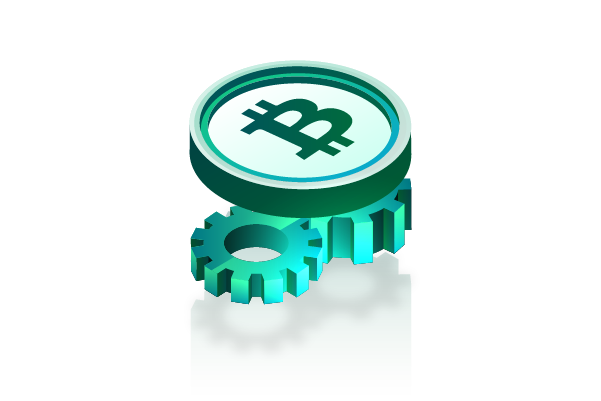Both IPOs and ICOs offer significant opportunities for companies and investors, but with very different approaches. An IPO (Initial Public Offering) is a traditional method where a company sells its shares to the public for the first time, allowing them to raise substantial capital while providing ownership rights to investors. On the other hand, an ICO (Initial Coin Offering) is a more modern approach, used by blockchain projects to sell digital tokens to investors globally. This article will help you understand the key differences between the two and what benefits you can gain from each method.
If you’re an investor or entrepreneur considering between an IPO or ICO, it’s essential to understand how they work and the risks involved. In this article, we’ll discuss the benefits of IPOs and ICOs, from gaining access to larger capital, boosting company profiles, to the flexibility and quick potential returns of ICOs. By reading further, you’ll gain clear insights into which method might better suit your business or investment needs. Let’s dive deeper!
What is IPO? How Do They Work?

An Initial Public Offering (IPO) is the process by which a private company sells its shares to the public for the first time. This event is significant for a company because it allows them to raise additional funding from external investors who were previously unreachable. When a company decides to go public, it means they are opening up part of the company’s ownership to the public through the stock market. This also provides the public with the opportunity to become shareholders in the company, meaning they own a small portion of it.
The IPO process begins when a company that wants to go public hires investment banks or underwriters to assist them. These banks help determine a suitable share price, decide the number of shares to be sold, and estimate the total funds the company aims to raise. The company then files various documents with regulatory authorities, such as the Securities and Exchange Commission (SEC) in the United States, to ensure that all information provided to the public is transparent and compliant with regulations. This process can take months or even years.
Once all preparations are complete, the company will set the IPO price and the date for its launch on the stock market. On the IPO day, the company’s shares begin trading on stock exchanges like NASDAQ or NYSE. Public investors can now purchase shares of the company through their brokers. Share prices typically fluctuate based on market supply and demand. There is a chance that the share price will soar if there is high investor interest, but there is also the risk that the price could fall if interest is low.
An IPO offers various benefits for a company, such as additional capital for expansion and increased market visibility. However, it also comes with challenges, such as the pressure to deliver consistent profits since the company is now accountable to shareholders. Deciding to go public is not an easy decision and requires careful planning, as it will alter the company’s internal dynamics and how they operate under public scrutiny.
The Benefit of IPO (Initial Public Offering)
An Initial Public Offering (IPO) is a crucial milestone for a company, signifying its shift from private to public status. This process unlocks various opportunities for both the company and investors, allowing access to a larger capital pool, enhanced market credibility, and liquidity for shareholders. Understanding the benefits of an IPO is essential for businesses contemplating this route and for investors evaluating the implications of investing in public companies. Here are Some Benefits of IPO:
1. Access to Larger Capital
One of the biggest benefits of an IPO is the ability for a company to raise a substantial amount of capital. By selling shares to the public, companies can secure significantly more funding compared to other methods like bank loans or venture capital.
This allows the company to expand its business, finance acquisitions, or develop new products. IPOs also provide access to large institutional investors, which is typically not available in private funding rounds.
2. Increased Profile and Credibility
Companies that go public often receive more attention from the media, financial analysts, and the general public. This increases the company’s visibility in the market and can strengthen its image and credibility.
Publicly listed companies are often seen as more stable and trustworthy, which can attract more customers, business partners, and potential investors.
3. Liquidity for Shareholders
An IPO offers early shareholders, such as founders, employees, or early investors, the opportunity to liquidate part of their ownership and generate profits. Before an IPO, these shares are usually illiquid and difficult to sell.
Once the company goes public, its shares can be traded on the stock exchange, providing flexibility for shareholders to sell their holdings on the open market.
4. Transparency and Accountability
After an IPO, the company is required to follow stricter accounting standards and report its financials regularly to regulators and the public. This forces the company to be more transparent in its operations, which can improve internal management and decision-making.
Although this adds administrative burdens, the increased accountability can provide a competitive advantage in the long term.
What is ICO? How Do They Work?

An Initial Coin Offering (ICO) is a fundraising method used by cryptocurrency projects to raise capital by selling tokens to investors. These tokens typically represent some sort of utility within the project’s ecosystem or serve as a digital asset with value. ICOs became popular during the cryptocurrency boom as an alternative to traditional venture capital funding. Essentially, a company launches an ICO to gather resources, and in return, investors receive tokens, which could increase in value or provide access to the project’s platform.
The process of an ICO typically begins with the creation of a whitepaper. This document outlines the project’s goals, technology, the team behind it, and how the funds will be used. The whitepaper is designed to attract investors by providing detailed information about the token’s utility and the project’s potential. Once the ICO is announced, investors can purchase tokens using popular cryptocurrencies like Bitcoin or Ethereum. These tokens are often sold in exchange for a more established cryptocurrency rather than fiat currency like dollars or euros.
Once the ICO is live, there is a period during which tokens are distributed to investors, and in many cases, these tokens can later be traded on various cryptocurrency exchanges. The value of the tokens often depends on the success of the project and market demand. Some ICOs offer early bird discounts, meaning those who invest early receive a better deal on the token price. If the project is successful, token prices may increase significantly after they become available for trading, offering potential returns for early investors. However, if the project fails or doesn’t gain traction, the value of the tokens may plummet.
Also Read: ICO vs Crowdfunding: How to Choose for Our Needs?
ICOs offer a unique opportunity for startups to raise funds quickly, but they also come with significant risks for investors. The ICO space has been relatively unregulated, leading to cases of fraud, where some projects have disappeared with investors’ money (also known as “rug pulls”). Despite these risks, ICOs remain a popular way for blockchain projects to fund their development. Investors are advised to thoroughly research any ICO, reviewing the whitepaper and team credibility before deciding to invest.
The Benefits of ICO (Initial Coin Offering)
An Initial Coin Offering (ICO) has become a popular method for startups in the blockchain and technology sectors to quickly and efficiently raise capital. Unlike traditional funding methods, ICOs enable companies to secure investments directly from a global pool of investors without facing extensive regulatory hurdles. This innovative approach not only provides essential funds for launching projects but also offers investors unique opportunities in the growing cryptocurrency market. Here are Some Benefits of ICO:
1. Fast and Flexible Funding
One of the primary benefits of an ICO is the flexibility and speed of raising funds. Blockchain-based projects can quickly raise capital from investors worldwide without having to go through lengthy regulatory processes like an IPO.
ICOs enable startups or blockchain projects to secure funding directly from the community without needing to rely on banks or venture capital firms. This is especially beneficial for tech projects that need early funding to develop their product.
2. Access to Global Investors
ICOs provide direct access to investors from all over the world. Due to the digital nature of tokens and blockchain, anyone with an internet connection can participate in an ICO, without geographical restrictions. This contrasts with IPOs, which are often limited to specific countries or certain groups of investors. ICOs also appeal to retail investors who might not have the financial means to participate in traditional IPOs due to stricter financial requirements.
3. Token Ownership and Ecosystem Use
Investors in ICOs receive tokens that can be used within the project’s ecosystem. These tokens can serve various functions, such as a medium of exchange within the platform or as part of the services the project offers.
Additionally, if the project is successful and the token’s value increases, investors can sell their tokens for a profit. While tokens typically do not grant ownership rights like shares do, they can appreciate in value as the project succeeds.
4. Lower Costs and Lighter Regulation
Launching an ICO is much cheaper and faster than an IPO. Companies do not need to pay high fees to investment banks or comply with the strict regulatory procedures required in an IPO.
The lower costs make ICOs an attractive option for tech startups that may not have the capital to afford the expensive regulatory and administrative processes of an IPO. Additionally, with lighter regulation, developers have more freedom in determining how the funds raised will be managed.
The Key Differences Between ICO and IPO

The difference between ICO (Initial Coin Offering) and IPO (Initial Public Offering) is significant, primarily because they cater to different sectors of the financial world and operate under distinct mechanisms. While both are methods for raising capital, the type of investment, the regulatory environment, and the investor’s role in each are vastly different. Understanding these differences is crucial for potential investors and companies alike, as the level of risk, potential reward, and legal obligations can vary greatly between an ICO and an IPO:
Nature of Offering
In an ICO, a company—typically a startup or a project within the cryptocurrency or blockchain world—offers digital tokens or coins to the public in exchange for capital. These tokens may serve as currency within the project’s ecosystem or grant access to specific services, but they usually do not confer any ownership rights or control over the company. Investors in ICOs essentially bet on the success and future utility of the platform or service being developed. If the project succeeds and the token gains value, investors can sell their tokens at a profit. However, these tokens don’t represent an equity stake in the company, meaning that the investor has no formal say in how the company is run or direct entitlement to its profits.
In contrast, in an IPO, a company sells shares to the public for the first time. This process is typically undertaken by more mature companies that have grown past the startup phase and are looking to expand further by raising large amounts of capital. Investors who buy shares through an IPO acquire an ownership stake in the company, giving them rights such as voting in shareholder meetings and receiving dividends if the company profits. Essentially, IPO investors are becoming partial owners of the company, aligning their financial success directly with the performance of the company itself.
Regulation
The regulatory environment surrounding ICOs and IPOs is one of the biggest differences between the two. ICOs are often launched in a legal gray area, with little to no regulation in many countries. This allows companies to conduct ICOs quickly and with fewer hurdles, but it also exposes investors to greater risks. Because there is no guarantee of transparency, many ICOs have been associated with fraud, scams, or failed projects, where the money raised disappears without any real progress made. In some jurisdictions, authorities like the SEC (Securities and Exchange Commission) have started to impose regulations on ICOs, treating some as securities offerings, but the space remains largely underregulated.
On the other hand, IPOs are heavily regulated by financial authorities such as the SEC in the United States or equivalent bodies in other countries. Before a company can go public, it must meet stringent criteria, including filing comprehensive financial disclosures, undergoing audits, and complying with reporting standards that ensure transparency.
The company must provide potential investors with a prospectus that details its financial health, business model, risks, and future prospects. The regulatory oversight in IPOs offers more protection to investors, ensuring that they are making informed decisions based on verified data. This makes IPOs a more secure investment, though the regulatory burden also makes the process more expensive and time-consuming for companies.
Investment Type
Another major difference lies in the type of investment. In an ICO, investors purchase tokens, which can serve multiple functions depending on the project. These tokens may be used as a currency within a decentralized application, represent digital assets, or give access to a particular service or platform. However, these tokens typically do not confer any ownership rights or voting power within the company.
The value of the tokens is highly speculative and tied to the success and adoption of the project. If the project fails or is not adopted as widely as expected, the tokens may lose their value entirely. The return on investment in an ICO depends on how the market perceives the project’s success and the utility of the tokens, making it a high-risk, high-reward opportunity.
In an IPO, investors are purchasing shares, which represent a portion of the company’s equity. With shares, investors have direct ownership of a piece of the company. This comes with certain rights, such as voting on major company decisions and receiving dividends if the company distributes profits to its shareholders. Additionally, the value of shares is tied to the company’s financial performance and the broader stock market, giving IPO investors a more tangible link to the company’s fortunes. While stock prices can fluctuate significantly based on market conditions, they are typically less speculative than ICO tokens, as they are tied to real-world business performance and valuation metrics.
Process and Costs
The process of launching an ICO is far less cumbersome than that of an IPO. An ICO typically begins with the creation of a whitepaper, which outlines the project’s goals, technology, the role of the token, and how the raised funds will be used. This document is not always subject to rigorous verification, meaning that while some ICOs are legitimate, others might be built on unverified claims. The actual launch of the ICO can be done quickly, often with just an internet connection and a blockchain platform for token distribution. The low entry barriers make it an attractive option for startups looking to raise funds without dealing with banks, regulations, or intermediaries. However, this also opens the door to poorly planned or fraudulent projects.
Also Read: ICO vs STO: What Are The Differences?
Conversely, an IPO requires a company to go through a long, expensive process. Companies must prepare detailed financial statements, undergo audits, and work closely with investment banks, known as underwriters, who help manage the offering and ensure that the company meets all regulatory requirements. The company also needs to file with financial authorities, such as the SEC in the U.S., to gain approval for the offering. All of this takes time and money, often costing millions of dollars. While the process is complex and resource-intensive, it adds layers of security and transparency, protecting both the company and the investors.
Risk and Return
Lastly, the risk and return profile of ICOs and IPOs differs greatly. ICOs are highly speculative and carry significant risks. There is often little accountability or legal recourse if a project fails or turns out to be fraudulent. While the potential returns can be massive—some early investors in ICOs like Ethereum or Bitcoin made huge profits—the failure rate of ICOs is also high. A poorly executed project or one that fails to gain traction can leave investors with worthless tokens. Because of the lack of regulation and the speculative nature of most projects, ICOs are best suited for experienced investors who are willing to accept high risk in exchange for the possibility of high reward.
IPOs, while still carrying risks, are generally considered safer investments due to the strict regulatory oversight and the company’s established track record. Investors in IPOs are buying into companies that have proven business models and revenue streams. However, IPOs are not without risk—stock prices can fluctuate significantly, and there is no guarantee that the company will perform well after going public. That being said, the chances of outright fraud or failure are far lower in an IPO than in an ICO. Returns on IPOs tend to be steadier, with less dramatic swings than ICOs, and are often more predictable based on the company’s financial health and industry conditions.
Conclusion
IPO vs ICO: Exploring The Key Differences reveals the distinct pathways available for companies and projects to raise capital. While IPOs provide a well-established route for mature companies to attract investment through public shares, they come with extensive regulatory requirements and a lengthy process. On the other hand, ICOs offer a more agile and flexible approach for startups, particularly in the blockchain world, allowing them to secure funding quickly from a global audience through the sale of digital tokens. Each method has its unique advantages and challenges, making it crucial for investors to understand their specific features before committing.
In conclusion, both IPOs and ICOs present valuable opportunities for businesses and investors, but they cater to different needs and risk appetites. As you consider your options, reflect on your investment goals and the nature of the projects you’re interested in. Whether you’re looking for the stability and regulatory oversight of an IPO or the innovative potential and rapid funding capabilities of an ICO, being well-informed will empower you to make strategic decisions in the evolving landscape of finance. Understanding these differences can ultimately lead to more successful investment choices and better outcomes for your financial journey.
Disclaimer: The information provided by HeLa Labs in this article is intended for general informational purposes and does not reflect the company’s opinion. It is not intended as investment advice or a recommendation. Readers are strongly advised to conduct their own thorough research and consult with a qualified financial advisor before making any financial decisions.

